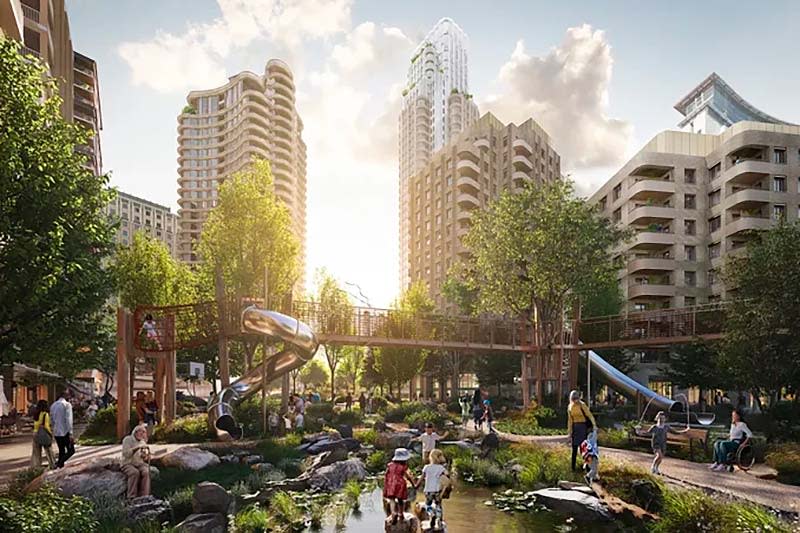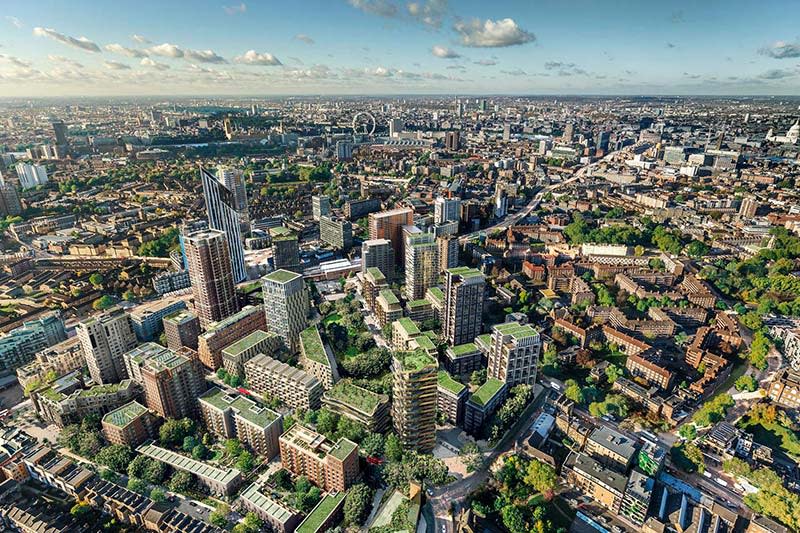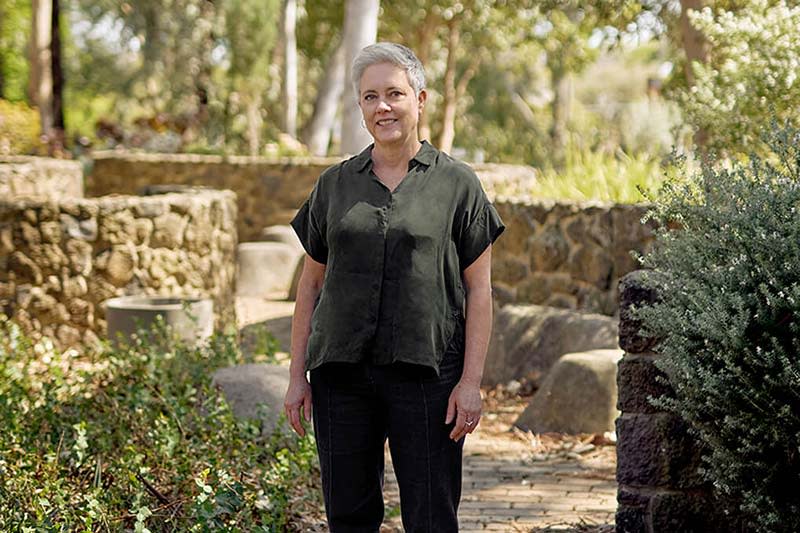
While developers in London, Milan, and Singapore have been proving that nature-based design delivers both environmental wins and serious profits for years, Australian property development has lagged these global standards.
Nature Based Cities aims to close that gap.
Australian property developers are discovering that building nature into projects drives sales, speeds planning approvals and increases property values.
International projects prove nature-based design creates competitive advantages.
Lendlease’s Elephant Park in London is an example. The development includes more than 1000 trees, 3000 bicycle spaces and an urban park called Elephant Spring at its centre.
It has 4.45ha of open green space with wildlife homes and a 1ha park with rain gardens that redirect rainwater away from London’s sewer system.
Apartments at Elephant Park recorded a 188 per cent price premium over the broader Elephant & Castle area.
Earl’s Court also in London is another nature-based housing development prioritising wildlife features and landscape-led design in response to land scarcity and climate challenges.
The development will feature more than 1000 new trees and targets 85 per cent biodiversity net gain and water systems designed to allow over 60 per cent of stormwater runoff to soak directly into the ground.

Earls Court Development Company head of design Sharon Giffen said the team “designed a landscape-led masterplan where nearly half the total space is given over to green and open landscaping and public space, because it is the right thing to do—for people and for our planet”.
“Nature delivers untold benefits to health and wellbeing, but it also serves as critical infrastructure in building long-term climate resilience,” Giffen said.
It’s the type of design thinking Tract Landscape Architecture director Janis Fischer wants to see more of in Australia.
Research by Nature Based Cities, of which Fischer is an advisory council member, found that no Australian environmental rating tool includes mandatory requirements for living landscapes such as these.
“In fact, you can get 6-star Green Star building rating without any landscape in the project whatsoever,” Fischer said.
This contrasts with international standards, particularly in the UK “where it’s now law that any new development needs to have biodiversity net gain”.
Besides meeting green regulations, there’s a solid commercial case for nature-based design, with some developers finding real business benefits from adding green infrastructure to their projects.
Urbis research found that park-front units achieved a 17 per cent price premium on average over the last decade, whilst park-front houses attracted a 34 per cent price premium compared to surrounding properties.

Property developments with nature-based features have faster sales cycles, with apartments facing internal green spaces selling before units without nature views.
Case studies from Melbourne developments show price premiums up to 18 per cent, rental premiums up to 49 per cent, and capital growth up to 18 per cent per annum linked with green space integration.
“They know that nature sells. It’s something they can use for marketing, but also it helps them get their green star credits, and it can help them with their planning approvals,” Fischer said.
The Nature Based Cities framework provides developers with tools to put these design principles into practice.
The organisation, founded by Hamton Property Group’s Paul Hameister, has developed guidelines and a scorecard that assess developments across multiple criteria, resulting in Commended or Exemplary ratings.
Scotch Hill Gardens (pictured top and below), a $400-million redevelopment of the former University of Melbourne’s Hawthorn campus, is the first Australian project using these guidelines from the outset.
“What we did at Scotch Hill Gardens was we got Nature Advisory engaged as the ecologists at the start. They went and did a survey of wildlife on site and provided recommendations back to us about what we can do,” Fischer said.
The 300-apartment development will retain 77 mature trees and plant an additional 151 new trees across its 1.62ha site.
Beyond keeping trees, the project considers biodiversity and habitat creation for vulnerable species that might live in urban areas.
This includes habitat boxes in existing trees, water sources for wildlife, and diverse habitat requirements for insects and other creatures based on ecological assessments.
Wildlife will benefit, and so too, developers, with government agencies responding positively to the Nature Based Cities framework.
The guidelines are being presented to government departments and the City of Melbourne for possible adoption into planning application processes.
The Green Building Council of Australia now offers additional Green Star points for developments using the Nature Based Cities scorecard—another reason for developers to adopt the framework.
“We’re already seeing it being endorsed by those sustainability rating organisations,” Fischer said.
Strategic planting provides natural air cleaning, removing pollutants and particles from urban environments. Dense vegetation acts as a sound barrier, reducing traffic noise levels by up to 10 decibels when properly designed.

Research from Macquarie University shows that trees and vegetation can lower temperatures by up to 6°C on days of extreme heat.
Developers implementing nature-based design can leverage these natural cooling systems to create more comfortable living environments whilst reducing reliance on expensive mechanical cooling infrastructure.
These benefits prove particularly valuable for medium and high-density developments near major roads or activity centres, where air quality, noise pollution and heat directly impact resident health and property values.
“Buyers can directly experience and appreciate nature, whereas other sustainability measures are less visible,” Fischer said.
Current Australian planning schemes focus mainly on tree cover and deep soil requirements, whereas Nature Based Cities guidelines promote broader consideration of understorey planting, minimum planting areas, and species diversity based on established ecological principles.
Nature Based Cities guidelines offer a pathway to align with global standards while addressing local market demands.
“The good thing about the scorecard is that, unlike reactive assessment tools that require design completion before evaluation, developers can set targets at the start of a project and get that included in the design right from the beginning,” Fischer said.
Australian property developers face a choice between maintaining the status quo or adopting proven strategies that deliver commercial and environmental returns.
The Nature Based Cities framework provides the tools to make this transition, future-proofing developments and positioning them more competitively in an evolving market.
The Urban Developer is proud to partner with Nature Based Cities to deliver this article to you. In doing so, we can continue to publish our daily news, information, insights and opinion to you, our valued readers.